This Low-Carb Cranberry Mulled Wine recipe creates a traditional delicacy that is rich and redolent with aromas of cinnamon, cloves, star anise, and orange. Stir up the holiday season with its warm essence. This recipe is low-carb, keto, Atkins, gluten-free, diabetic, and Banting diet-friendly.
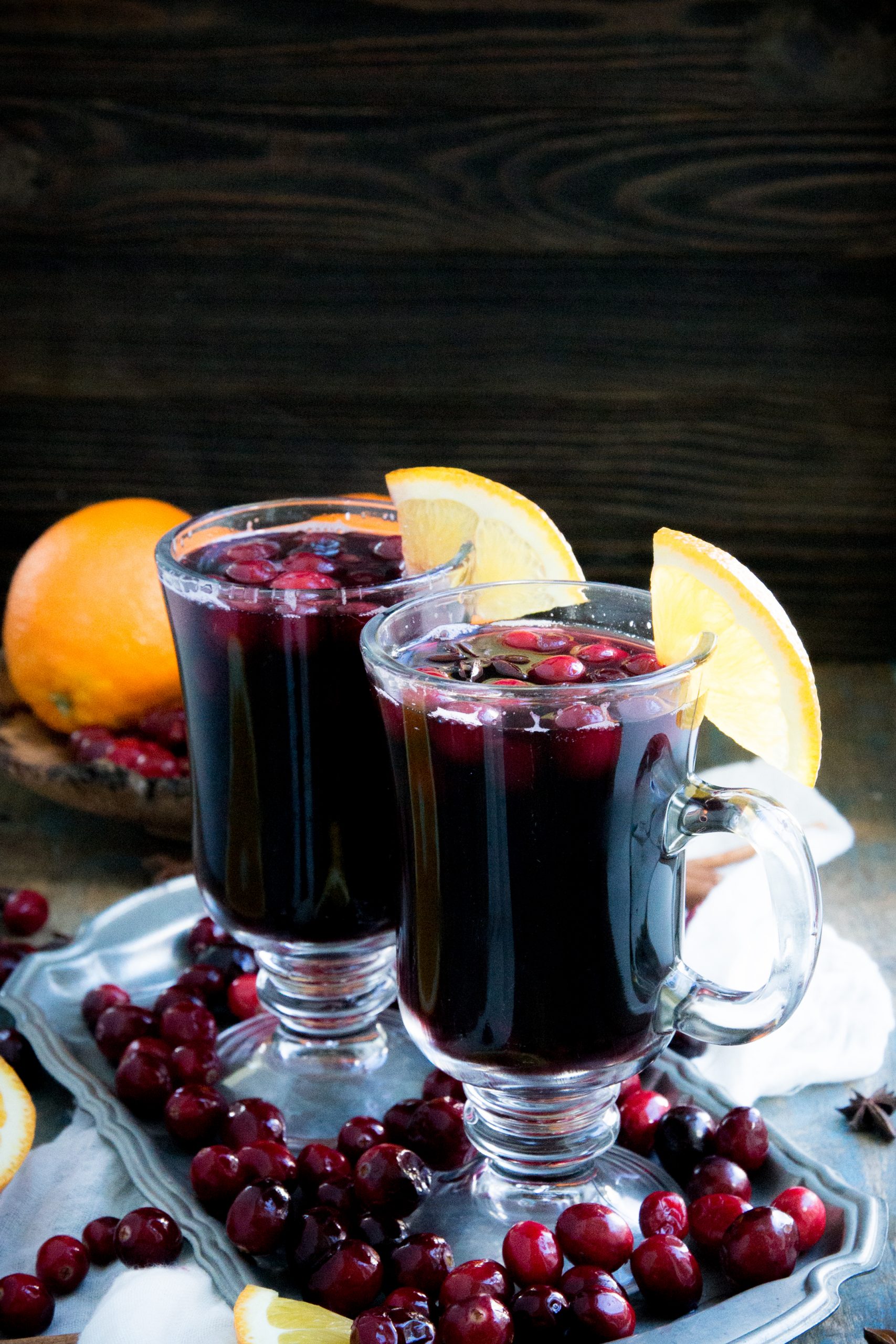
The Recipe for Low-Carb Cranberry Mulled Wine
This recipe for Low-Carb Cranberry Mulled Wine is a simple rendition of the age-old mulled wine. It’s easy to make and bursting with cranberry spice goodness. Add in the brandy at the end for a more high alcohol treat, or leave it out for a lower alcohol version.
Although it’s a simple recipe and takes only a few minutes to get it cooking, this Cranberry Mulled Wine requires time to simmer all of those warm spice flavors into the wine. After that, your wine is ready to serve. If you’re anything like me, you’ll enjoy the sound of the cranberries popping and the soothing spice aroma steaming up from the pot. This is a joy that comes from making your own low-carb mulled wine.
The Inspiration for our Low-Carb Cranberry Mulled Wine
For some reason, I have been craving mulled wine this year and decided to work on a low-carb version. I stumbled on this Cranberry Mulled Wine from The Pioneer Woman and loved the idea of incorporating cranberries–especially since I had an extra bag in the fridge that were leftovers from Thanksgiving. I couldn’t let good cranberries go to waste!
When deciding on this recipe, I wanted something simple but refined. Something people would want to enjoy when celebrating the holidays year after year.
With that in mind, cranberries and wine seem perfect for kicking off the holiday season. Many people can appreciate how a glass of red Cabernet can keep them feeling nice and warm. Since it’s usually served warm, mulled wine is even more perfect for creating a cozy atmosphere to combat the cold weather.
On the other hand, the taste of cranberries offers piquant qualities ranging from sweet to sour. Their flavor contrast somewhat resembles the highs and lows that mark each festive season, with cheery family gatherings that come to an abrupt end before we’ve fully relished them.
Despite the inevitable, we all want something to bring cousins, relatives, and long lost friends together. This is why I love this Cranberry Mulled Wine recipe. It sits right at the heart of these moments to leave a long-lasting wine effect that I’m sure you and your loved ones will enjoy.
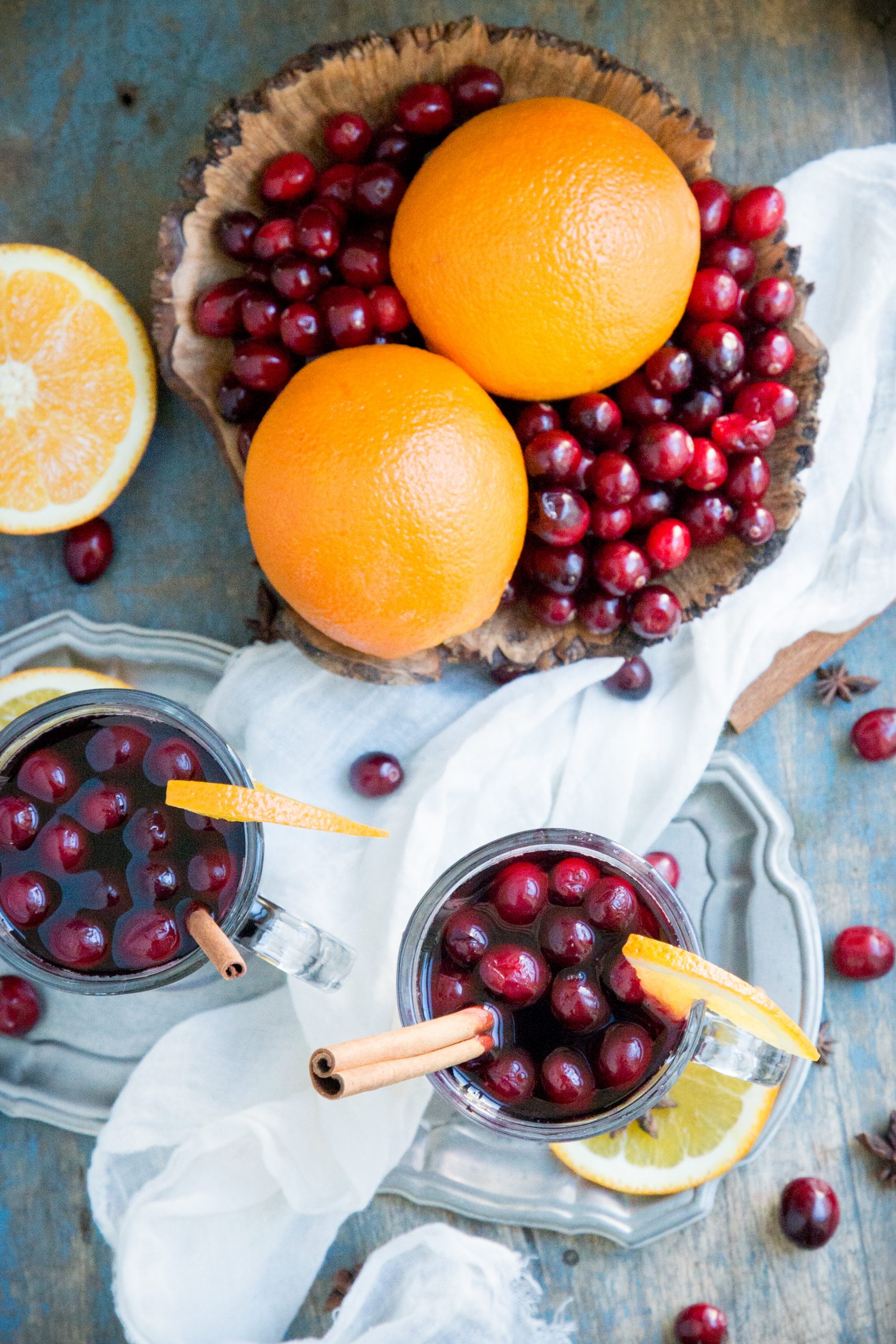
Disclaimer: We partner with Amazon and some of the links on this site are affiliate links which means we make a small commission from any sales to help keep the recipes coming! You do not pay any more. Thank you for your support.
What Is Mulled Wine?
Mulled wine is wine that has sweeteners and spices added to it and then heated gently so the wine absorbs the goodness of the spices. For centuries, the recipe has stuck around for a good reason, and serving it has become a part of the tradition during holiday seasons.
The concept of mulling wine originated in Europe, where they used mulling to reintroduce sweet, earthy flavors to leftover wine. It was a delicacy served at festivities like Thanksgiving— and still is.
Mulling the large portions of wine left over after celebrations prevented the wine from being wasted. Nowadays, the tradition continues, except many a cork is popped solely for the use of making mulled wine. No leftover wine is required!
Adding spices enhances the taste of wine, while a sweetener balances the savory hints from spices. Meanwhile, heating will bring the flavors down to a simmer and release potent aromas from the seasoned wine bringing a holiday fragrance to the whole house.
What Does Mulled Mean?
To “mull” is to sweeten and spice a beverage before heating it in a pot or crockpot. You can use mulling spices, usually made of cinnamon, nutmeg, and allspice, and dump them in the pot, together with the beverage. After mixing in a sweetener and heating it to a simmer, the drink becomes mulled.
The Alcohol Content of Mulled Wine
Typical wine used for mulling has a high alcohol content, ranging from 12% to 14.5% of Alcohol by Volume (ABV).
People often wonder whether heating evaporates some of that alcohol, which can be worrying if you want every ounce of your money’s worth. The answer to that is, it does. However, you will only lose about 15% of the alcohol after heating— a small amount you can rectify with a little bit of Brandy.
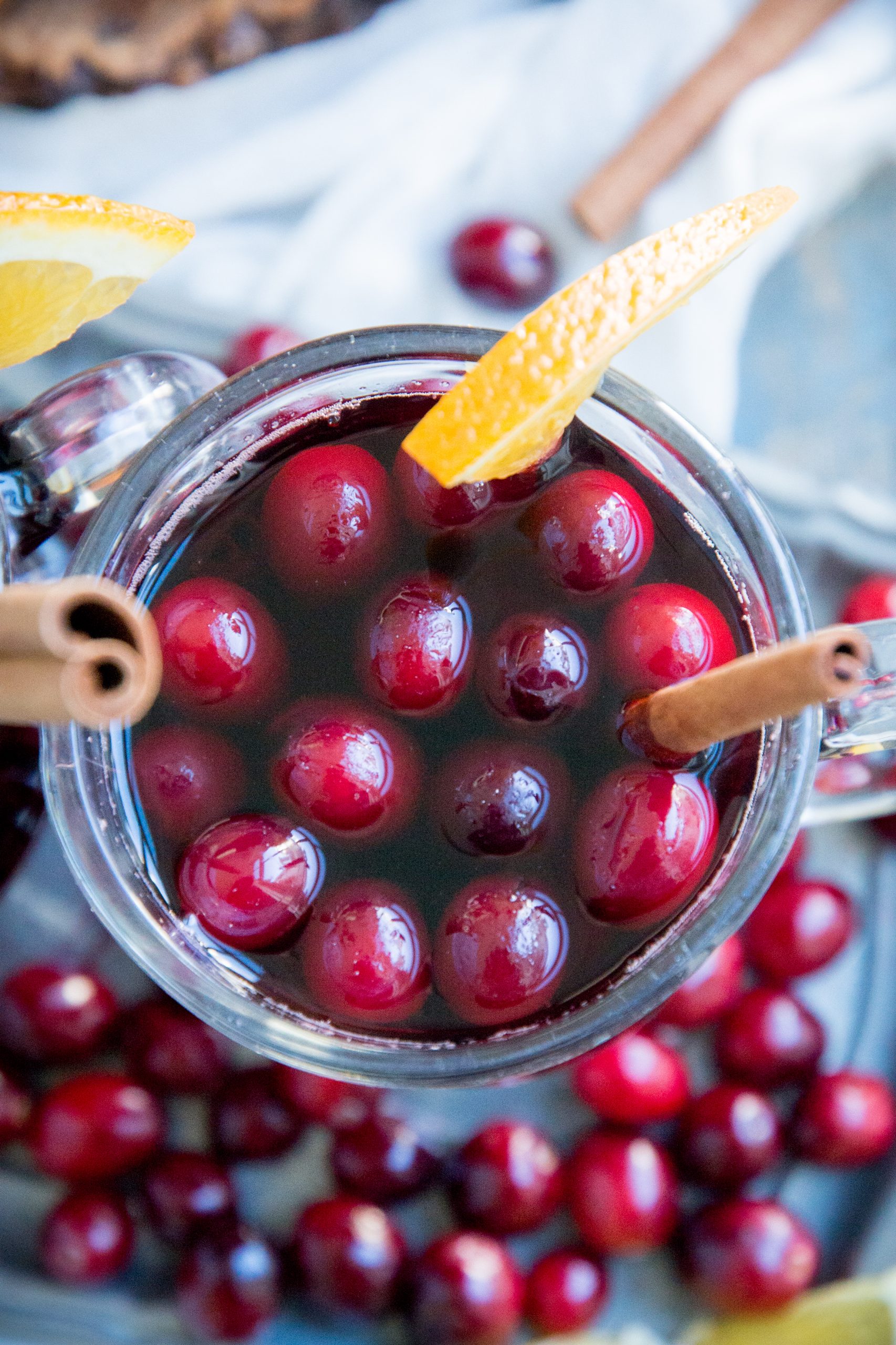
How to Store Mulled Wine
If you’re lucky enough to have any leftovers, you can store Cranberry Mulled Wine in the refrigerator. Allow it to cool completely before transferring into an airtight container and storing for up to 5 days.
You can even freeze it for long term storage, which is excellent considering the to and fro of the holiday season. I find that in-between making holiday treats and spending time with the family; I’m left with barely extra time to invest in the kitchen.
Freezing means you can make batches to store and make life easier for yourself. Simply transfer the mulled wine into a freezer-safe container and keep it in the freezer for up to 6 months. When you’re ready to use it, reheat it in a pot and whisk it together for a few minutes before serving it warm.
Another fun holiday idea includes blending the frozen mulled wine until it forms a slushie and serving it for a party. This comes in handy for later seasons when the weather is getting warmer, but the preparation happens now. Try it!
Is Low-Carb Cranberry Mulled Wine Keto-Friendly?
Most mulled wine recipes include sugar or fruit juices containing added sugar, making them too high in carbs to be keto-friendly. The great part is you can omit the sugar and end up with a keto-friendly Cranberry Mulled Wine. Cranberries are low-carb, with only 12 grams of carbs per 100-gram serving, making them ideal for keto diets.
Low-carb sweeteners like stevia and erythritol are great for keeping carbs at bay in any mulled wine recipe. Another trick I used in this recipe was to use the orange zest without the juice of the orange. This imparts a note of orange goodness without adding any carbohydrates.
This mulled wine has about 6 grams net carbs per a generous 6-7 ounce serving. This amount of carbohydrates can be enjoyed on a keto diet as long as you adjust the other foods you enjoy that day to keep your carb intake low enough that you stay in ketosis.
Can You Drink Mulled Wine Cold?
Yes, you can definitely drink mulled wine cold. You may even find it more refreshing. However, the flavors may not be as intense as when the wine is warm.
What to Serve with Mulled Wine
Although you can enjoy mulled wine without any food, there are some pairings hard to pass up. For example, anything with a salty cheese will make an excellent wine dish. Our Blue Cheese, Bacon, and Pecan Coleslaw or these Low-Carb Mini Bacon Chive Cheeseballs are exceptional for their blue and cheddar cheese flavors. You can also serve it with a savory meal, like this Crustless Spinach Quiche. The rich, savory flavor balances the sweet spiciness of the mulled wine.
If you want to keep the mulled cranberry wine for dessert, you can pair it with any keto-friendly cookies. One of my go-to holiday recipes, these irresistible Low Carb Pecan Shortbread Cookies are bursting with pecan and vanilla flavors that are perfect for rounding off the deep cinnamon essence from this classic wine.
Final Words
Be sure to customize this recipe to fit your needs. Feel free to also adjust the spices and the amount of sweetener to make this mulled wine more suitable for your taste, and enjoy it warm or cold. You can also swap out the sweetener if you like, just be sure to adjust for sweetness since some sweeteners are sweeter than others. Enjoy!
-Annissa
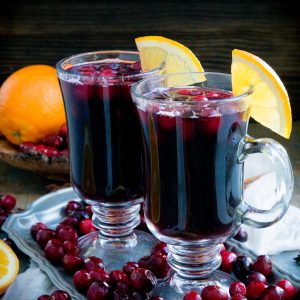
Low-Carb Cranberry Mulled Wine (Keto-Friendly)
This Low-Carb Cranberry Mulled Wine recipe creates a traditional delicacy that is rich and redolent with aromas of cinnamon, cloves, star anise, and orange. Stir up the holiday season with its warm essence. This recipe is low-carb, keto, Atkins, gluten-free, diabetic, or Banting diet-friendly.
Ingredients
- 3 whole cloves
- 2 cinnamon sticks
- 2 stars star anise
- zest from one orange
- 3 tablespoons granulated stevia/erythritol blend 2X the sweetness of sugar (Pyure)
- 1 750ml bottle of dry red wine (like a cabernet)
- ½ cup brandy (optional)
- 1 cup whole cranberries fresh or frozen
Instructions
Place the cloves, cinnamon sticks, star anise, zest from one orange, and sweetener in a large sauce pan.

Pour the wine over the top of the spice mixture and add the cranberries. Stir. Heat the mixture gently, stirring occasionally, over low heat until it reaches a simmer.

Simmer the mixture for 30 minutes. Remove spices if desired. Stir in the brandy, if using. Ladle into 4 mugs.



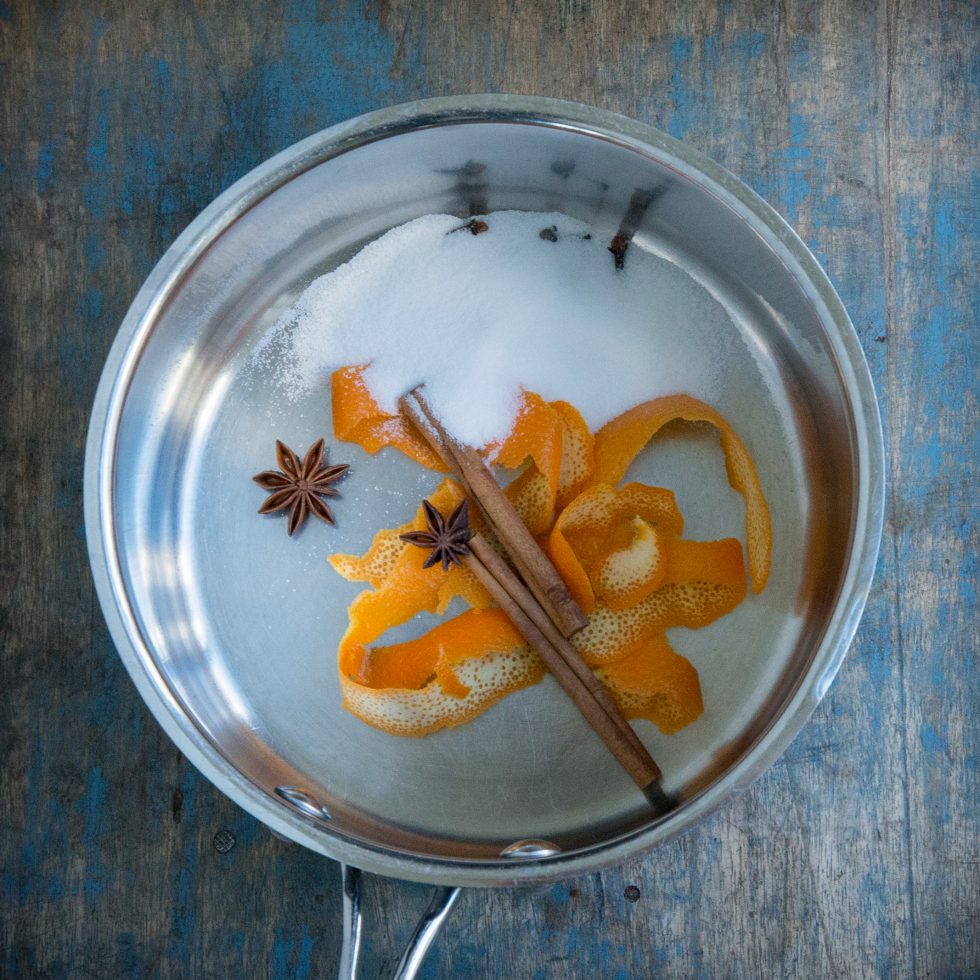
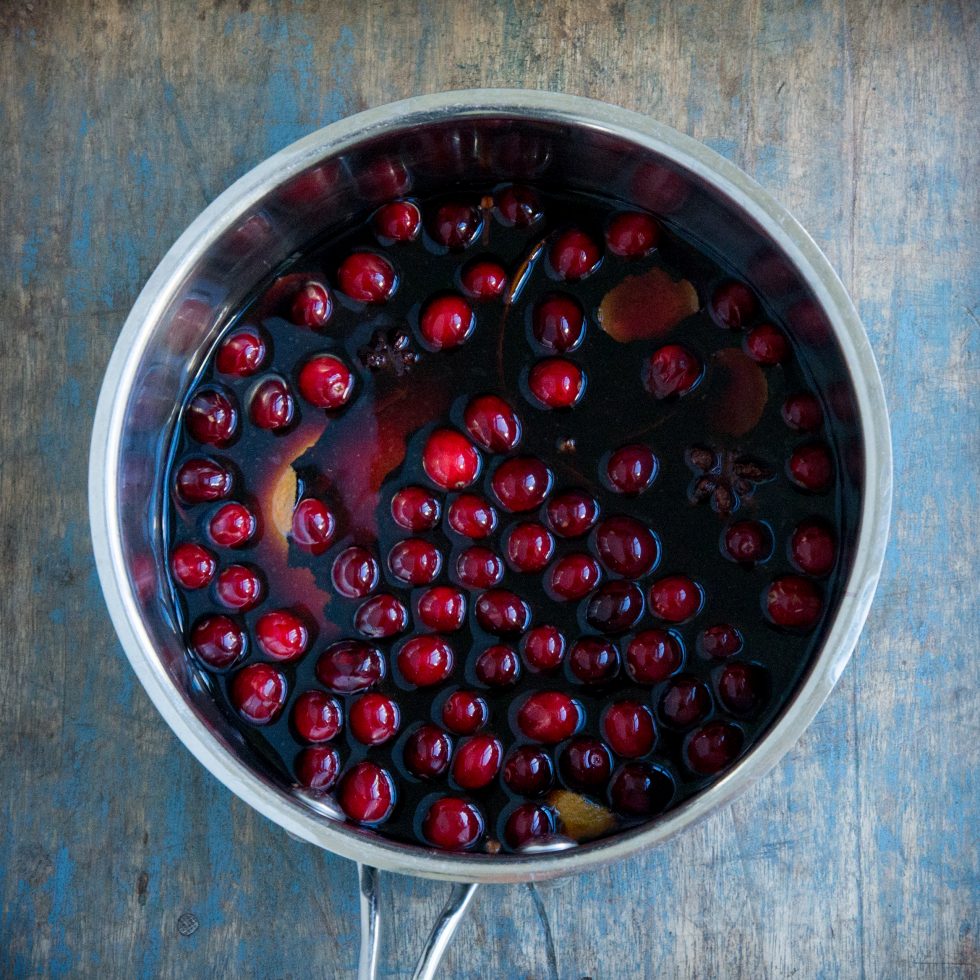
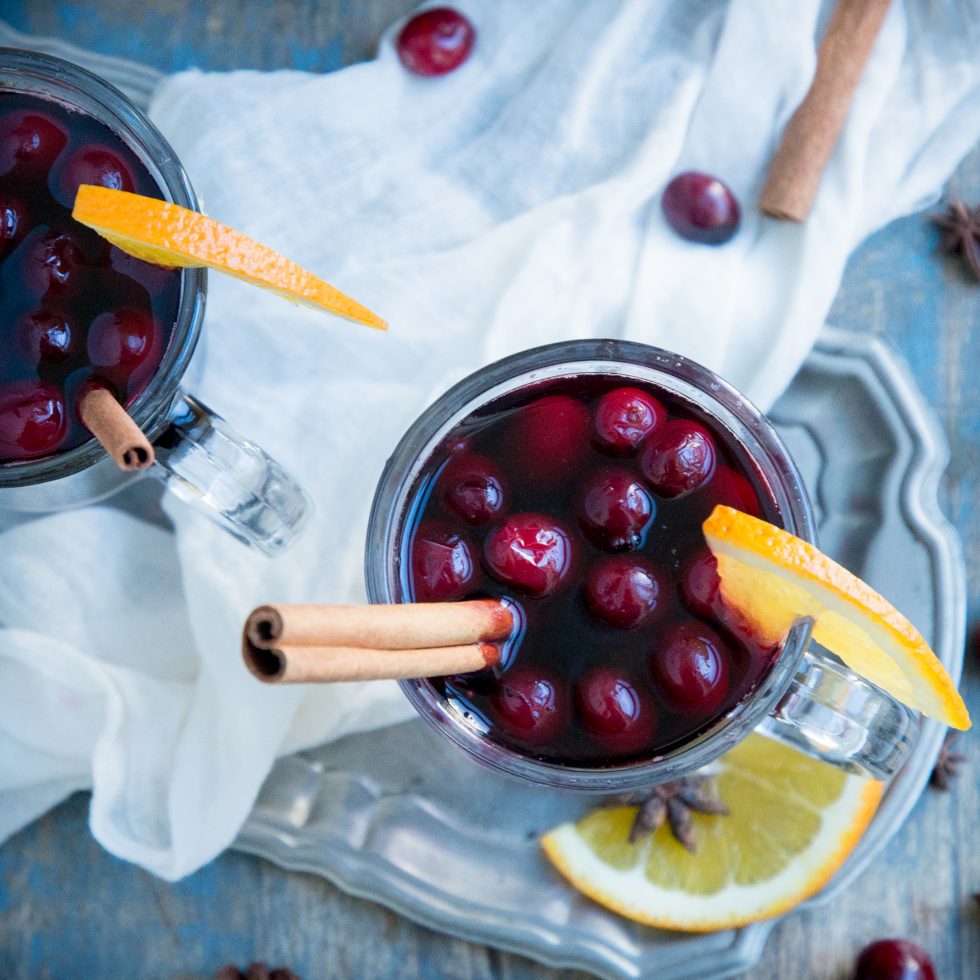


I have always loved mulled wine, but I don’t think I’ve ever tasted one with cranberries before! This combination of flavors seems wonderful, thank you for this recipe!
Thank you for this recipe, Annissa! Last night I was at a local community fundraiser and they were serving mulled wine as part of the event. I realised then that I, too, was craving it (winter here in NZ), and did not have any of theirs because I knew it would kick me out of ketosis. I happen to have frozen cranberries so now will excitedly make some tomorrow. Funnily enough, I’ve just made the crustless spinach/feta dish too, so double yay for me!! Thank you
Yay!
-Annissa